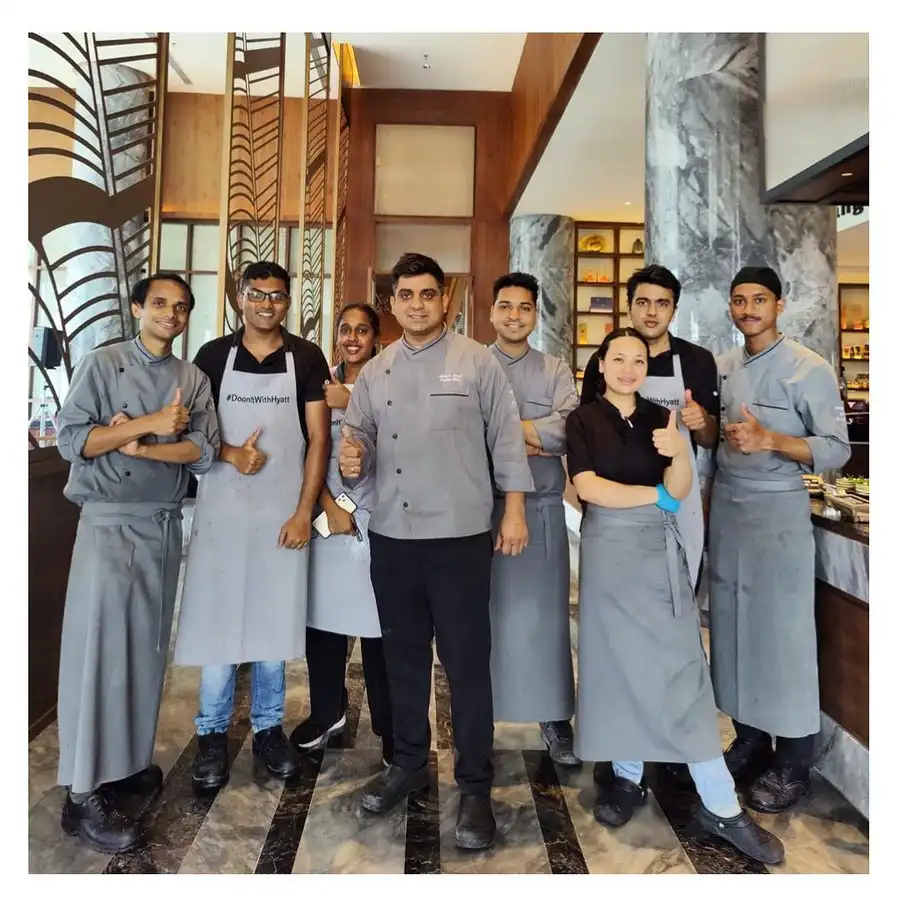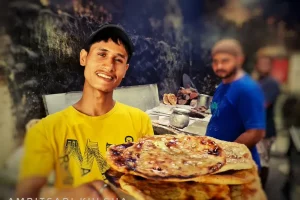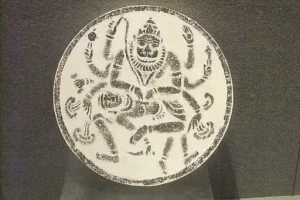Last week took me to the cooler environs of Dehradun, on a road trip faintly reminiscent of the Raj, when entire households would rush to the hills to escape the burning heat of the Indo Gangetic plain in the summer.
From Delhi to Doon, as we crossed sal forests and smaller towns like Shamli, Saharanpur and Roorkee, where once timber trade, and educational institutions thrived, as did old bakeries with wood fired ovens selling biscuits, cream rolls or stick jaw caramel toffees of English school life, we could still breathe in a faint whiff of nostalgia.
But my best taste of Dehradun this time has nothing to do with the workings of the Raj.
Instead, at Beyul (meaning “valley of the clouds”) a pretty restaurant facing a verdant valley at the Hyatt, I tried 8 kinds of Tibetan momos, the handiwork of a chef called Tenzin Dolma, who trained in Japanese and Chinese gastronomy in the big hotel chains of Delhi and worked there, before returning home during the pandemic last year—to Dehradun– to cook the food of her family.
In 1959, when India allowed Tibetan refugees to make their home in the country, no one could have imagined how the humble Himalayan dumpling, the momo, a staple of Tibetan meals, filled with yak meat, onions, potatoes or sparse vegetables, and sometimes with churpi (the hard salty yak milk cheese of Tibet, Nepal, Sikkim) would make its own journey to becoming one of the most popular contemporary Indian snacks.
As refugee families settled in their new homes and assimilated with the locals, the momo too adapted to becoming pop– first in limited areas of influence such as Dharamsala, Delhi’s Majnu Ka Teela, Doon’s Clement town, North Eastern gateways such as Darjeeling and Gangtok and now all over the metros and smaller towns.
Small kiosks, hole-in-the-wall eateries as also every food app these days retails the momo — adapted to Indian palates; vegetarian, fried, tandoored or even “Afghani”, slathered like a chicken tikka with cream and yoghurt and grilled (in Delhi’s bustling market, Lajpat Nagar).
In bigger cities, momos are in fact mass enterprises: made in work-sheds or factories, en masse, before being frozen and transported to numerous small retailers and chains. Sort of like petha in Agra or lukhmi in Hyderabad; no longer the kitchen enterprise.
What this relatively new and pervasive snacking culture tells us is how easy it is for culinary exchanges to happen and become deep seated, and how in fact, diverse foods integrate and transform across regions so that “authenticity” is a myth.
The journey of the momo mirrors the journey of another dumpling that arrived from a different land and culture centuries ago and became beloved by Indians.
Whether you call it samosa or singhara (in eastern India), whether it is made with patti (in Mumbai, where thin filo sheets are used instead of maida for the wrap) and whether you fill it with potatoes, green peas, daal, dried fruit or mince, the samosa is arguably India’s snack no 1. When it arrived in the courts of the Delhi Sultanate in around the 13th century, it was not quite how we know it, however.
If you know some more amazing facts about Amir Khusrau, do share them in the comments section!
You can also join us in the biggest online Urs celebration as we pay tribute to one of the greatest Sufis of the world!
Premiering on @Soofinama social channel! pic.twitter.com/wC2aMa4gtH— Jashn-e-Rekhta (@JashneRekhta) June 10, 2020
Amir Khusrau (1253-1325), scholar, poet and musician and a disciple of the sufi saint Nizammuddin Aulia mentions the “sambusak” that the noblemen ate during the Sultanate—a triangular pastry with a filling of mince, ghee and onions. Sambusak in fact exists even today as part of the Mediterranean/Arabic mezze and is a sibling of the Persian Sanbosag (literally meaning “triangular snack). It was mentioned in Arabic cookbooks of the 10th-13th centuries, pre-dating European cookbooks.
The 1968-published classic cookbook A Book of Middle Eastern Food by Claudia Roden that has long been held as authoritative in the West narrates the story of how a guest at a caliph’s banquet in Baghdad apparently recited a poem in praise of the sanbosag/sambusak.
Four personal favourites — much used!
Treasures of the Italian Table – Burton Anderson
Five Quarters – Rachel Roddy
The Food of Italy – Claudia Roden
The Food of Spain – Claudia Roden pic.twitter.com/luyrovR8Xj— EdwardMO
(@EdwardHMO) September 9, 2021
And yet it is the Indian samosa and its many iterations that have influenced modern global culinary cultures far more visibly —whether you are at a restaurant in London or Zanzibar (that has had trade links with the western Indian coast for centuries).or Mauritius. From what we hear and read, the pastry in Iran in fact declined soon after the middle ages, remaining limited to just a few areas.
The Tibetan momo seems set on a similar journey of inventiveness and fame —not all of which may be deemed tasteful by us purists. Yet, this sort of mingling of ideas and inventiveness is a natural evolution; faster now with technology, social media and travel.
But before the information “highways” of the present, food and thoughts about food dispersed via actual highways as people travelled albeit more slowly. The Silk Route is of course one of the most fascinating trade routes (or a set of routes) of the past (2nd century BCE to 14th century) that connected the Mediterranean with China, cutting through the enormous breadth of Central Asia and northern parts of the Indian Subcontinent (the maritime routes went south).
All across this erstwhile “highway” we find a smattering of wheat based dumplings which are essentially the momo (or the samosa) in another form. The large family of Chinese dumplings (the wonton as also the baozi or the steamed, fluffy mantou buns, called manzu in Japan/mandu in Korea), the Turkish manti, as also the pierogi of Eastern Europe and the Italian ravioli are all siblings.
Various accounts contend that the dumpling in fact originated in central Asia and travelled east and west. In fact, India too had a brief tryst with the Turkish/Uzbek manty, supposedly an ancestor of other dumplings (though provenance in food history is usually debatable) in the early Mughal kitchen.
Author Salma Husain gives a recipe for the steamed manty from Babur’s kitchen—the first Mughal emperor was a great chronicler, admits to disliking the foods of Hindustan (except the fish) and yearning for his native Uzbeki fruit and foods. The recipe for the manty, as detailed in The Emperor’s Table instructs us to make a hard dough with atta, salt, egg yolk and fat and use this for the wrap. The filling is a mix of mince and pumpkin with spices and the steamed square dumpling (in Uzbekistan, manty is steamed in a special utensil called kashkan) is served with yoghurt in which garlic has been mixed.
This is pretty similar to the Turkish dish of today. As also to the ravioli of northern Italy, similarly filled with pumpkin on many occasions, in pretty small square parcels of dough and served in a butter-garlic sauce.
The dumpling may have got refined, but its essence remains the same.
Also Read:
From Muzaffarpur to Jamaica—how one dish travelled the world
How colonial Britain bungled in viewing diverse Indian cuisine as a mere ‘curry’




















